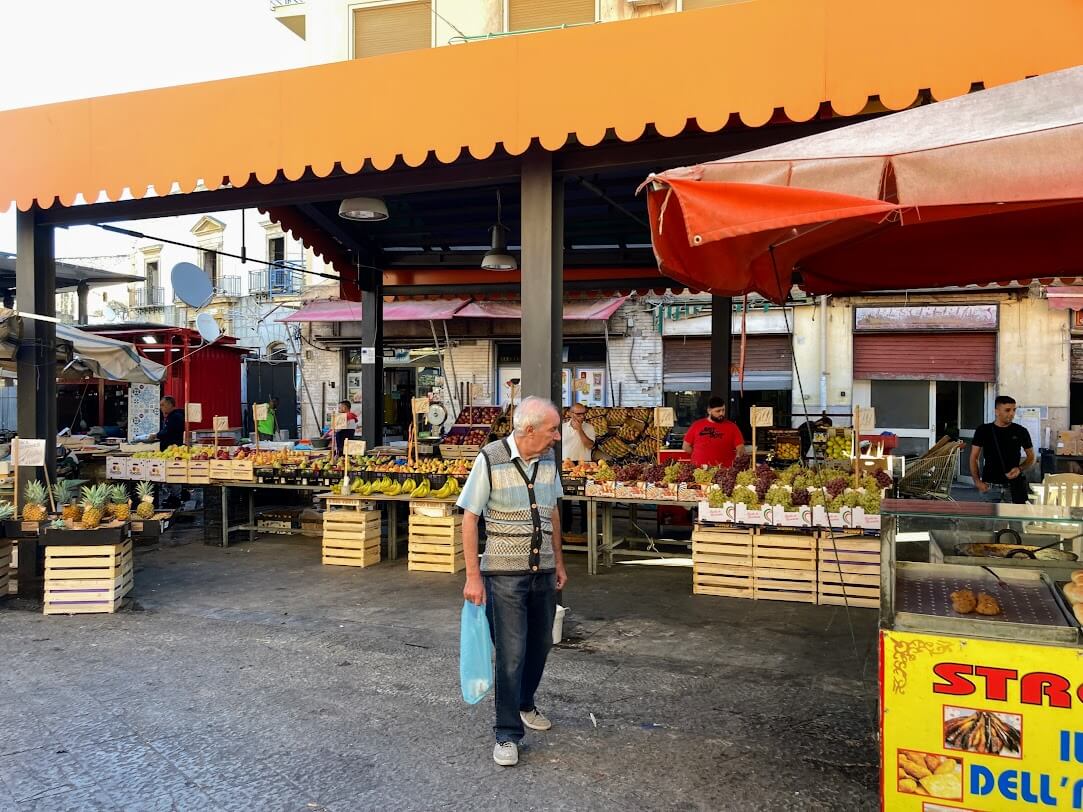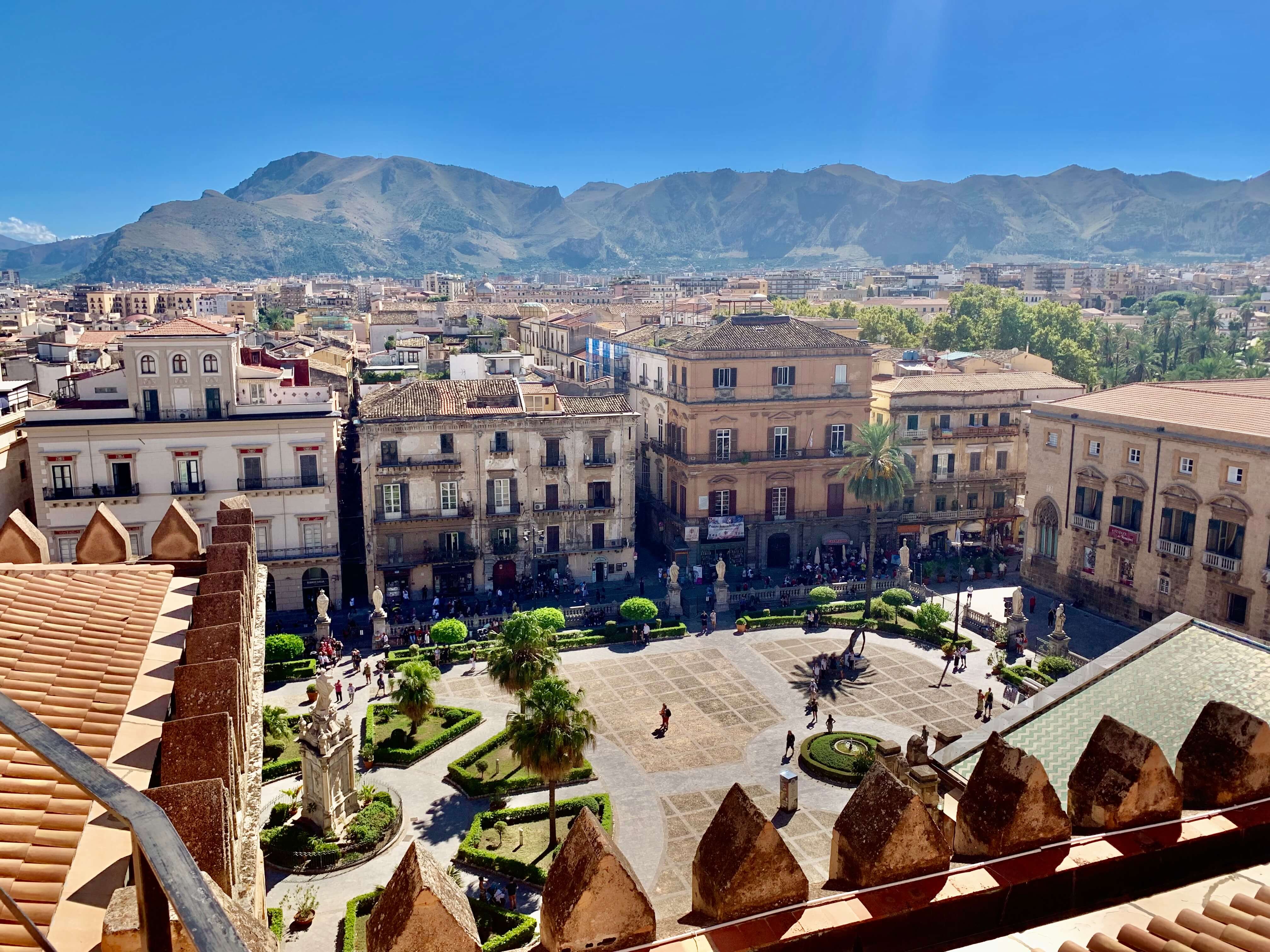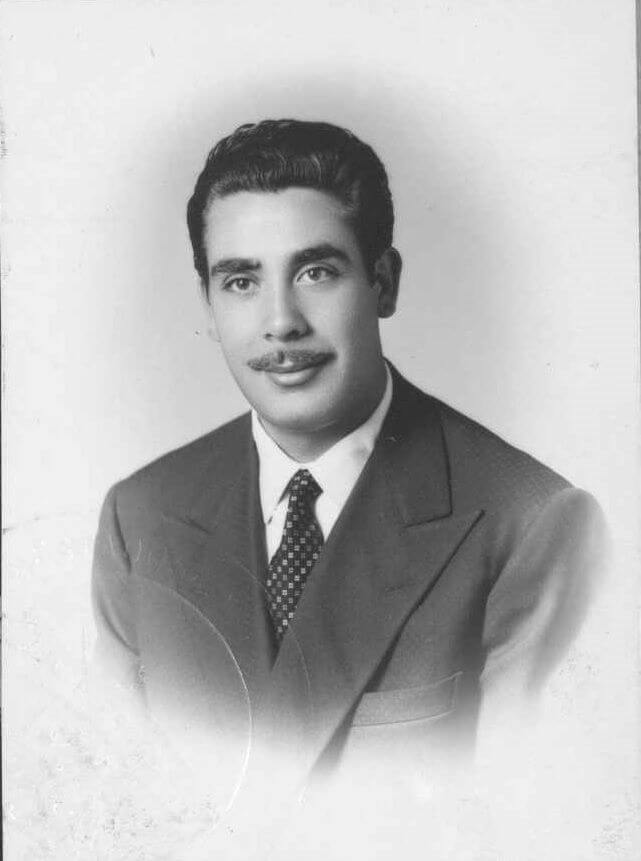- Home
- Main Cities in Sicily
- Palermo
- Palermo II
More of What to See in Palermo: The Hidden Gems
Welcome to a journey through the hidden gems of Palermo, an enchanting city with countless treasures waiting to be discovered. This is a continuation of my first page about what to see in Palermo.
From its rich history to its vibrant culture, Palermo offers a captivating blend of old-world charm and modern allure. Here is a city that effortlessly combines tradition and innovation.
Let the spirit of Palermo captivate your senses on this unforgettable journey.
The History of Palermo
Palermo's history dates back to ancient times. From the 800s onwards, it became the capital of Sicily under Arab rule.
A century and a half later, the Normans conquered Sicily from the Arabs. In terms of administration, they picked up where the Moors had left off. Many of Palermo's main attractions are a legacy of this period.
Even later, the rulers changed many times. One of them was the Spanish Aragoneses. The Spanish influence can also still be seen in the city's architecture.
The latest difficulties arrived after the unification of Italy in 1860. Soon after that the Mafia began to extend its grip over the island. In Palermo, this period was first seen in the construction of huge apartment blocks and later in uncontrolled violence.
Mafia's power began to decline from the 1980s onwards, thanks to the efforts of many hard-working campaigners of justice. The most famous of these is the judge Giovanni Falcone who, like many others, was eventually forced to give up his life fighting for the rule of law.
In its shock, Falcone's death also severed once and for all the spine of the long reign of the Mafia. The people were no longer willing to forgive, and the culture of silence that had protected the Mafia was finally coming to an end.
This was also the beginning of Palermo's Golden Age. Today, Palermo is a popular tourist destination. From a bleak city plagued by pollution and crime, it has become a welcoming place full of good food and world-class attractions.
I visited Palermo the first time in 2014, and the speed and radicality of the change even since then have been nothing short of astonishing.
Top Attractions in Palermo
Palermo is a dynamic city teeming with attractions. I have covered the main attractions in my first post about things to do in Palermo. Check IT first if you are new to the city or have only limited time to be there.
You can also combine those attractions with some of those represented here, according to your interests.
If you are interested in Palermo's Arab-Norman heritage, which includes many of its main attractions, look at THIS post.
Of course, Palermo's vibrant streets are one of its attractions. I love the atmosphere in this city. If you feel lame or out of inspiration, all you need to do is walk out of the apartment door and look at everything in the city's streets.
Some might love it, some might hate it, but I doubt it leaves anybody indifferent. The streets of Palermo are filled with art, music, and culinary delights. Its diverse attractions create a compelling narrative that invites exploration and discovery.
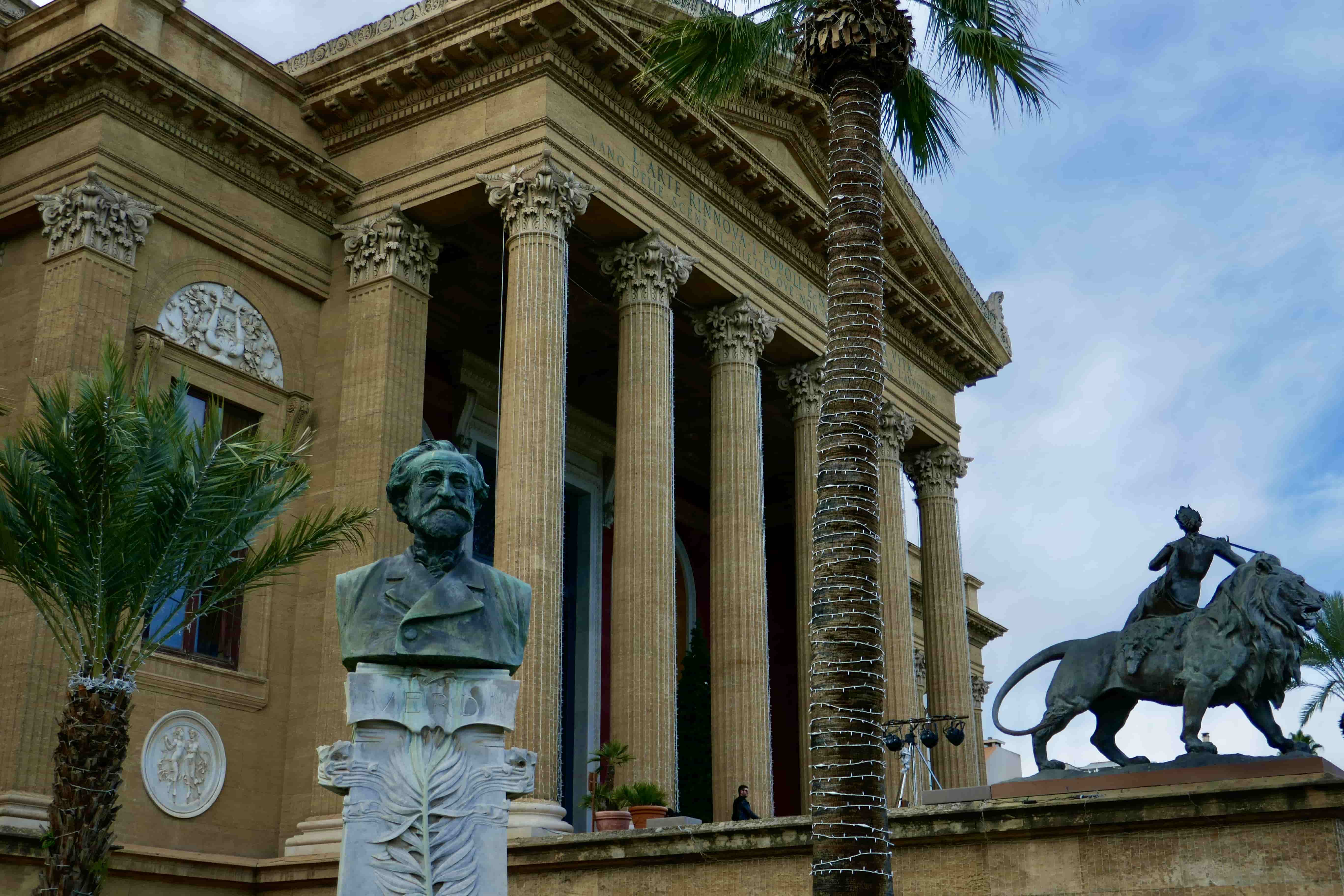 The statue of Giuseppe Verdi in front of Teatro Massimo.
The statue of Giuseppe Verdi in front of Teatro Massimo.What to See in Palermo: 1. Teatro Massimo
The Teatro Massimo is a stunning opera house completed in 1897. It is the largest opera house in Italy and the third largest in Europe.
Its impressive size and beauty make it a focal point of the city and a must-visit for anyone interested in the performing arts. Or the fans of the Godfather movies - as the trilogy's climax was filmed here.
The main auditorium can seat over 1,300 spectators, providing an intimate yet grand setting for operatic performances and concerts.
The theater offers guided tours, allowing visitors to explore its history and behind-the-scenes workings. If you are not attending a concert, this is your only other chance to get inside of this legendary theatre.
What to See in Palermo: 2. I Segreti del Chiostro
The secrets of the monastery are waiting for you right in the center of Palermo, on the edge of Bellini Square. There, around many corners, you will find the café run by the local nuns.
For centuries, these nuns have mastered the art of creating delicacies. The story of this small café started when the city's nobility began to ask the nuns for pastries for their feasts.
The café can be accessed by paying the entrance fee to the baroque church of Santa Catarina (recommended!) or - if you are already familiar with the church - through the back door at the corner of Piazza Pretoria.
If you're having trouble choosing what to order, try a cannolo. This traditional Sicilian delicacy, made by these nuns, is indeed heavenly! Which is not to downplay their other treats.
If the weather is fine, you can enjoy the pastries in the lovely garden in the café's courtyard—or take them home. This is an absolute recommendation for anyone visiting Palermo!
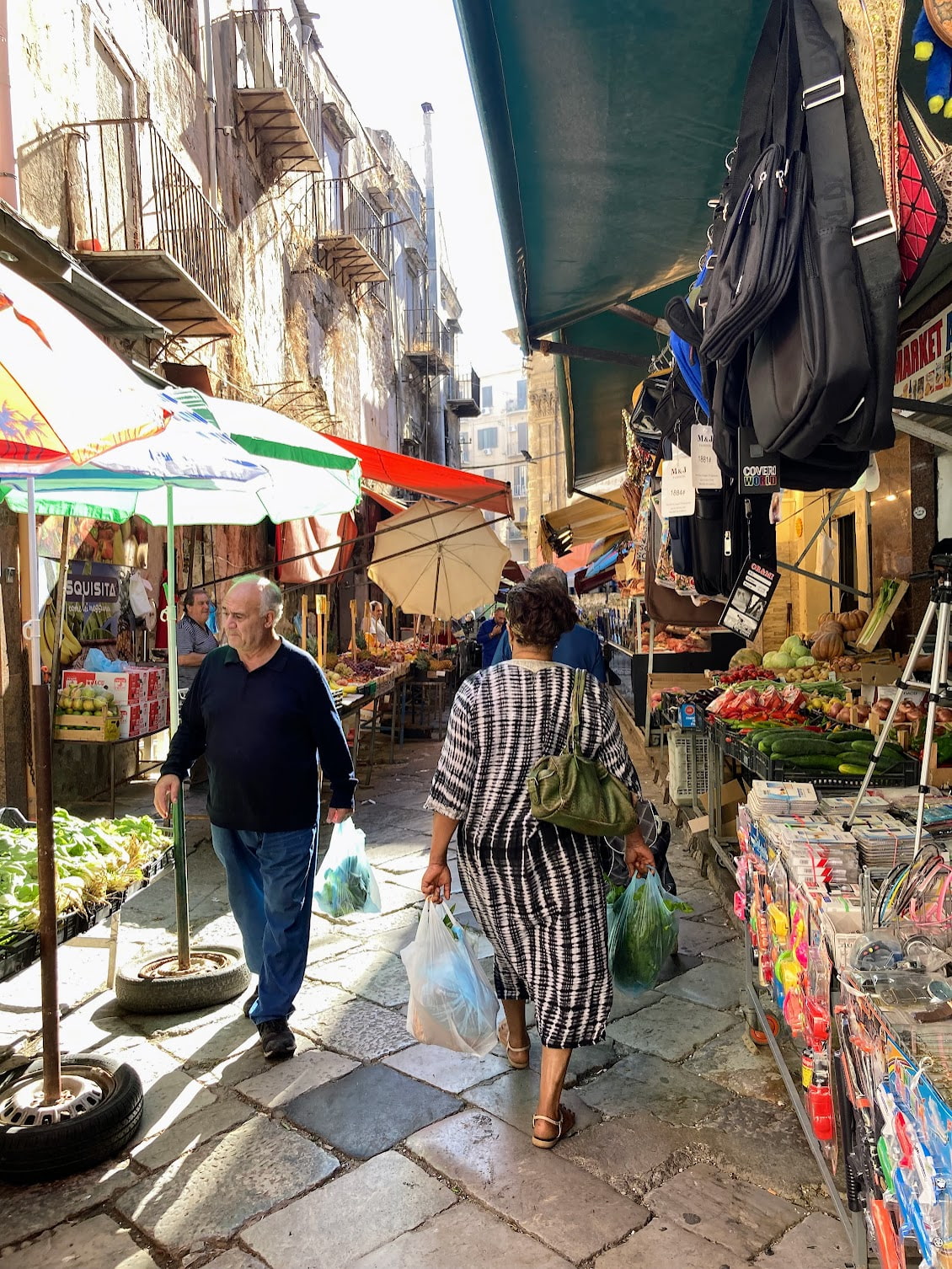 Ballaro Market - a great place to do your shopping.
Ballaro Market - a great place to do your shopping.What to See in Palermo: 3. The Ballarò Market
In my previous post about things to do in Palermo, I mentioned one of the city's main attractions: its markets. There are three of these: Ballaro, Capo, and Vucciria.
Today, Vucciria is also known as the center of nightlife. In Capo, you can find various delicacies, places to eat, and traditional fruit stalls.
In this second part of Palermo's attractions, I would like to highlight the Ballaro Market. It is the oldest and liveliest of all the markets in Palermo.
Ballaro has been running continuously for over a thousand years, since Arab times. It is near the central railway station, on the historic center's edge.
As you wander through the narrow alleys, you'll be greeted by the vibrant colors, the enticing aromas, and the lively banter of vendors. The atmosphere is electric, providing an authentic glimpse into the daily life of the locals.
The market offers a wide range of delicacies and other wonders. And if you prepare your own food, look no further! There are also small boutiques along the edges of the market selling what you might not find in the market itself.
Whether you're looking to sample delicious food, buy fresh ingredients, or just soak in the vibrant atmosphere, the Ballarò Market is an essential stop on your journey through the city.
What to See in Palermo: 3. Mondello
Mondello's history also dates back to the Arabic times (circa 800-1000 AD) - like so many other things in this strange little island. Back then, it was a fishing port. However, that time has passed a long time ago; today, it is known as Palermo's official beach.
People flock here in the summer to escape the city's heat, which means it is then very crowded—even more so on weekends.
The place empties in winter, but that doesn't mean it's completely dead. Mondello has restaurants and cafés along the beach and a small piazza where life goes on no matter what time of year.
In winter, Mondello is a great place to rest your nerves if Palermo gets too much for you. It's a peaceful place to admire the sea and wander in nature.
However, the best time to visit is in spring or autumn, when the weather is warm enough for beach fun, but the place is not yet overcrowded.
Of course, if you want to enjoy the authentic, carnivalesque Sicilian beach life, the summer is just the right time.
The journey from Palermo to Mondello takes about 20 minutes by local bus. Buses leave from Piazza Crispi at regular intervals, several times an hour.
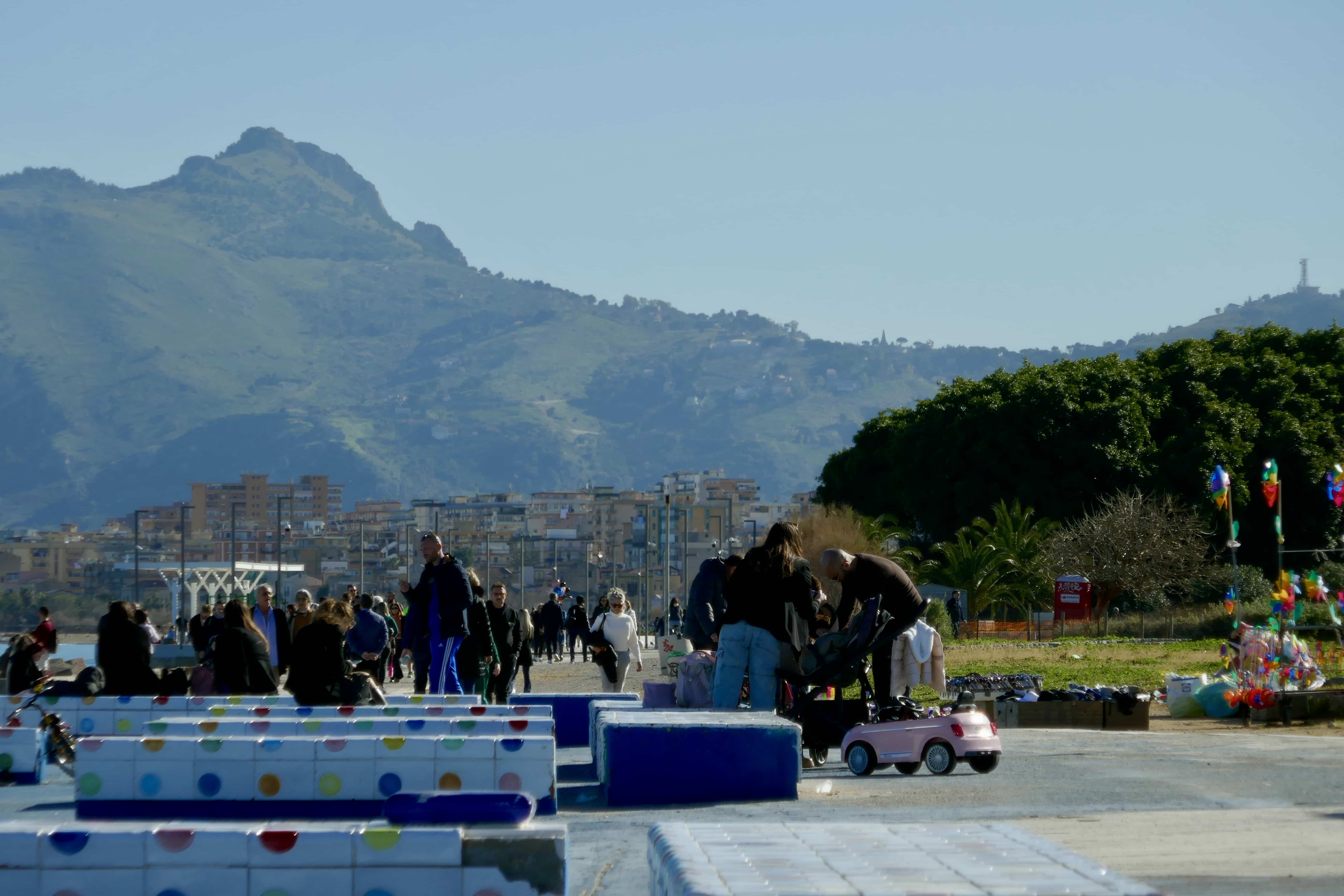 Seaside promenade near La Cala.
Seaside promenade near La Cala.What to See in Palermo: 4. Seaside Promenade at La Cala & Foro Italico
Another option—and more nearby than Mondello—to escape the city's hustle and bustle is to head to Palermo's marina, La Cala.
It's especially lovely on sunny weekends when locals come to enjoy the proximity of the sea. You can also grab a snack or a drink near the marina while watching the waves.
Walking along the coastline from La Cala, you will come across the Foro Italico, a small park and promenade by the sea, which is another excellent place to relax your mind.
La Cala and Foro Italico are close to the historic districts of Kalsa and Vuciria. So there are plenty of restaurants and other activities nearby. Or, if you still crave the tranquillity of nature, you can continue along the shore to Orto Botanico, the university's botanical garden, just a short walk away.
What to See in Palermo: 5. Galleria d'Arte Moderna Palermo
Palermo's modern art gallery was a departure from what I am used to seeing in contemporary art museums. However, it is an interesting overview of the work of regional artists.
The museum focuses on 19th-century landscape paintings, which offer a fascinating glimpse into Palermo's past. The most recent works in the permanent exhibition are from the mid-20th century.
The museum also has temporary exhibitions. There was an extensive exhibition by the Sicilian photographer Enzo Sellerio when I was there. Not only did he capture much of Sicilian life, he also took many other legendary pictures like that of Edie Sedgwick dancing in her room at the Chelsea Hotel.
Sellerio's exhibition was not advertised on the museum's website, so it's worth checking out what the place offers. The museum is next to Piazza Sant'Anna, so it's easy to find.
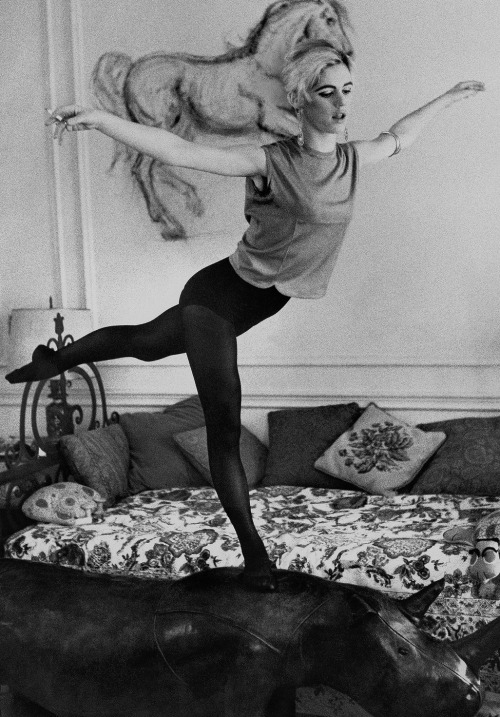
What to See in Palermo: 6. Antonino Salinas Archeological Museum
Interested in the ancient history of Western Sicily? Then, a visit to Palermo's archaeological museum might be in order.
The museum is named after the archaeologist and coin collector Antonino Salinas. It is located near Via Roma and Teatro Massimo.
The museum offers the chance to admire Sicily's most important collection of Punic and ancient Greek artifacts, including artifacts imported from Selinunte and Agrigento.
The Palermo Archaeological Museum is neither too big nor too small. The emphasis is more on the attractivity of the artifacts than on their quantity, but there's still plenty enough of them.
The Antonino Salinas Archaeological Museum offers a refreshing glimpse into the ancient world amidst the vibrant atmosphere of Palermo's streets.
What to See in Palermo: 7. Sanctuary of Santa Rosalia
Santa Rosalia is the patron saint of Palermo. Two festivals are held every year in her honor.
Like many other Sicilian patron saints, Rosalia was the daughter of a noble family who chose to follow Christ rather than marry.
In the early 1000s, Rosalia fled to Monte Pellegrino to meditate. It was there that she also died. Hundreds of years later, she became a patron saint of the city during the plague, which disappeared after her remains were transported to the town.
The Sanctuary of Santa Rosalia is on the site where Rosalia supposedly lived and died. According to legend, her cave was so small that a young woman could barely squeeze into it. Later, the site was enlarged, and a small church was built into the rock.
Monte Pellegrino can be reached by local bus from Piazza Crispi. After visiting the sanctuary, you can hike the many trails along the mountain. The views are good, the air is clean, and you get plenty of exercise - especially if you walk all the way down to the town.
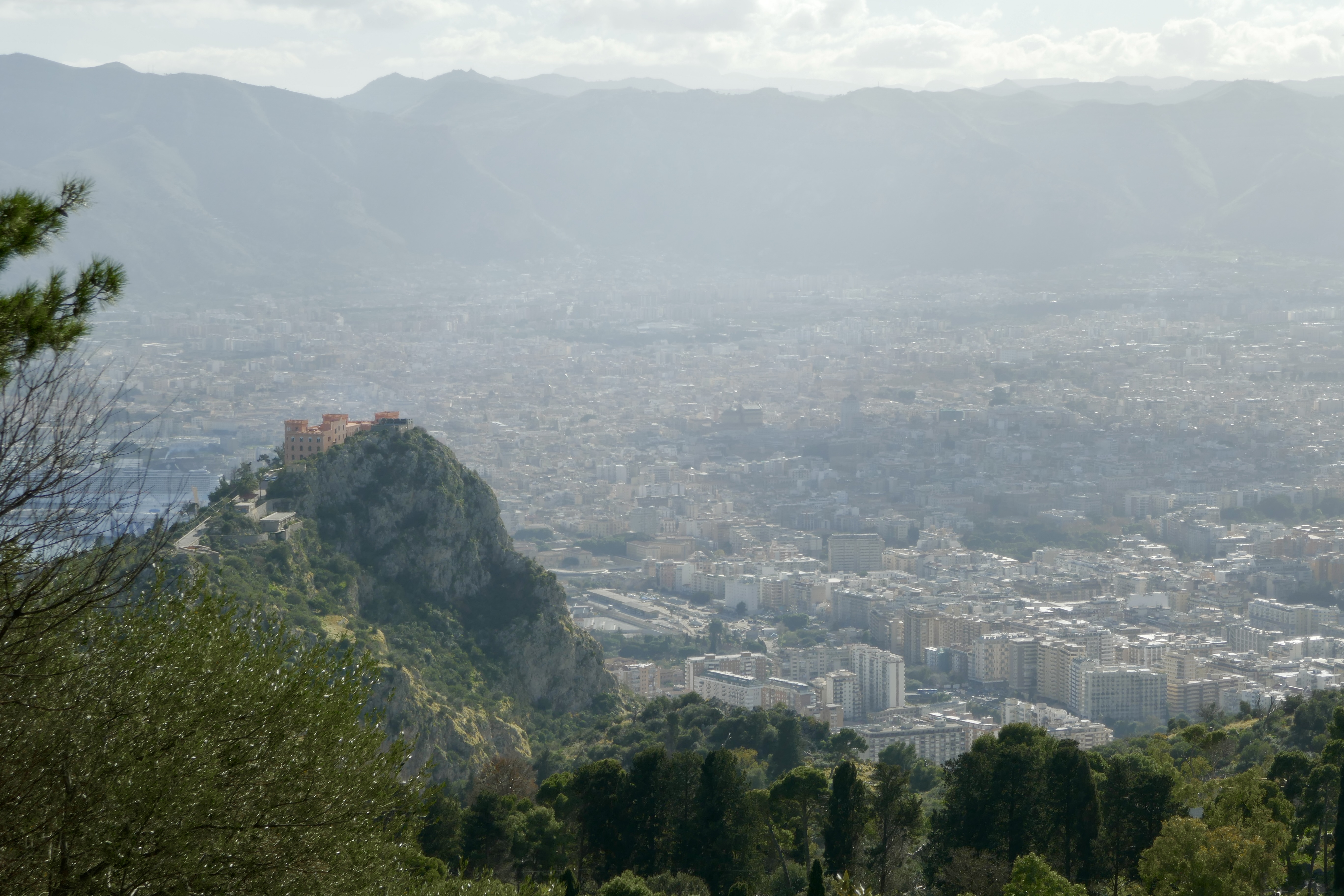 The view over Palermo as seen from the hiking trails of Monte Pellegrino.
The view over Palermo as seen from the hiking trails of Monte Pellegrino.Conclusion: Exploring Palermo's Hidden Gems
Palermo offers an overall experience that will leave no one cold. Its attractions, from the museums to the life on the piazzas, all tell their own story.
Palermo's attractions are not limited to a few specific places or buildings. Walking through the streets, you will encounter everyday experiences that you can only experience in this city.
Although Palermo is a tourist destination nowadays, it has not lost its original character. I don't think this will happen any time soon—the city's people will ensure that.
The people of Palermo have a strong character, a sense of humor, and an openness to all aspects of life. The city's legendary mayor, Leoluca Orlando, once said, referring to the city's long history: 'Everyone who sets foot in Palermo is a Palermitan.'
This attitude is particularly evident concerning the less well-off, also found in the city. Palermo is as popular with immigrants as it is with tourists. It is a mixed soup that somehow combines all the different ingredients into a tasty whole.
Palermo also has a vibrant cultural life, and it doesn't just bask in the light of the past. Step into Palermo, take in the sights but also stop and feel the atmosphere. Be receptive to the city's charm. Let Palermo seduce you, and you will not be disappointed.
Related:
The Main Attractions in Palermo
The Emirate of Sicily: The Rise and Fall of the Arab Rule
The Life and Death of Giovanni Falcone
Saint Rosalia - The Patron Saint of Palermo
(February 6, 2025)
Recent Articles
-
Sicilian Food - Rich Flavors, Endless Passion
Apr 09, 25 09:54 AM
All you need to know about Sicilian food, its ingredients and history. -
Things to Do in Palermo - Tips for a Perfect Holiday
Apr 05, 25 04:27 AM
Things to Do in Palermo - From historic landmarks to delicious food, this guide has it all. -
The Story of Tommaso Buscetta: From Mafia Boss to Key Witness
Mar 30, 25 05:12 AM
Tommaso Buscetta built Sicilian Mafia into a global empire - which he then destroyed.
Follow MANY FACES OF SICILY on Facebook, Instagram, Bluesky & Pinterest
Contact: vesa@manyfacesofsicily.com
